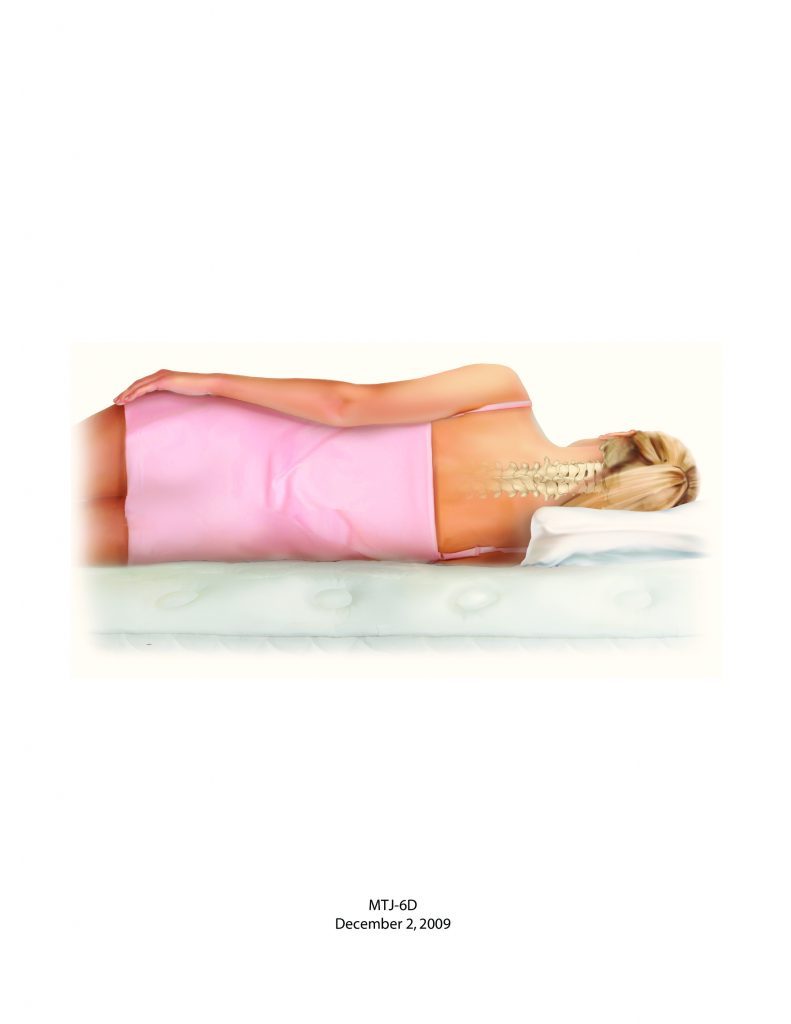Time in Bed

photo credit: pexels.com
Ideally, we spend a third of our lives in bed. Therefore, doesn’t it make sense that we should prioritize what we lie on during that time? However, for one reason or another, many people use their mattress long past its expiration date. This not only stops you from getting the sleep you need, but it can also bring about a variety of pains and exacerbate your symptoms if you have allergies. For your health’s sake, consider if your mattress is good for you, choose the right one if you need a new mattress, and take care of your mattress so that it lasts longer.
Tossing and Turning
It’s no secret that an old and battered mattress can keep you from getting the sleep you need to thrive in everyday life. The most obvious reason for this is that when your mattress is no longer comfortable, you can’t be comfortable — no matter how much tossing and turning you do through the night. This keeps you from falling and/or staying asleep for that eight-hour stretch your mind and body need for proper rejuvenation.
Chronic Pain
A poor mattress can also contribute to different pains throughout your body. The most common pains from a bad mattress are back and neck pain, which usually happens as your mattress gradually transforms from a somewhat flat and supportive surface to one that sags in the middle. As a result, this lack of support for your spine allows your spine to fall into an excessive kyphotic curve of flexion. So, whether the saggy mattress keeps you up all night as you toss and turn or puts unnecessary stress on your spine as you sleep, the result is the same: chronic back and neck pain.
Comment by Dr. Joe Muscolino – What is the Right Firmness?

Proper pillow thickness when sleeping. Originally published in the massage therapy journal (mtj). Permission Dr. Joe Muscolino
Generally, we think of overly soft mattresses that sag in the middle as unhealthy, and therefore many people think that the firmer the mattress, the better. But this is not necessarily true. The ideal firmness to your mattress can vary, but generally, we want a mattress that is soft enough to allow the apex of your thoracic spine and your pelvis to sink in, but then firm enough to push up against and support your lumbar spine. Of course, exactly which mattress you choose will also depend on your comfort with that specific mattress. If we are not comfortable, we cannot sleep, and if we do not sleep, our bodies will not be rested.
- It’s worth noting of course that a quality pillow can also play a major role in reducing spine pain, especially neck pain. The ideal pillow when sleeping on you back is one that it thicker under the neck to push against and support the cervical spine, but thinner under the head so the head can drop back into a healthy anatomic position. If you sleep on your side, the thickness of the pillow should be sufficient to prevent the head and neck from collapsing into lateral flexion down toward the bed, but not so thick that it pushes the head and neck up into lateral flexion away from the bed.
- Many people benefit from sleeping on their back with a pillow under the knees to place the hip joints in a little bit of flexion. This slackens the hip flexor musculature, which if tight would pull the pelvis into anterior tilt, which would then increase the lumbar lordotic curve, causing jamming of the facet joints and possible low back pain.
- If you sleep on your side, placing a pillow between the knees is often a good idea. This prevents the thigh closer to the ceiling from collapsing down into adduction toward the other thigh, which would then torque the hip and sacroiliac joints.
Digital COMT
Did you know that Digital COMT (Digital Clinical Orthopedic Manual Therapy), Dr. Joe Muscolino’s continuing education video streaming subscription service for massage therapists (and all manual therapists and movement professionals), has at present (January of 2019) more than 1,000 video lessons on manual therapy continuing education, including entire folders on massage therapy, stretching, and joint mobilization. And we add seven (7) new videos lessons each and every week! And nothing ever goes away. There are also folders on Pathomechanics and Anatomy and Physiology, including an entire folder on Cadaver Anatomy… and many, many more on other manual and movement therapy assessment and treatment techniques? Click here for more information.
Dust Mites
Old mattresses can be a nuisance to people with allergies. This is because years of dead skin and oil from your body collect on your mattress, which attracts dust mites. In fact, there could be millions of these microscopic critters where you sleep each night! Most people are unaffected by dust mites, but if you are allergic to them, your symptoms (e.g., runny nose, sneezing, itchy eyes, sinus pressure, coughing) can be exacerbated. They can also exacerbate asthma, leading to shortness of breath and tightening in the chest.
Replacing Your Mattress
If you’ve decided that getting a new mattress is your next step, it’s important to get the right kind. There are many different types of mattresses with various levels of firmness (firm, plush, pillow-top, etc.), and there are certain mattresses that are best suited for specific body types and sleep styles. Doing online research and trying out mattresses in-store will help you choose the perfect one. Some of the most popular kinds of mattresses to consider are:
- Innerspring mattresses
- Foam mattresses (i.e., memory foam, latex, polyurethane)
- Air mattresses
- Hybrid mattresses
Caring for Your Mattress
Once you choose and purchase the right mattress, it’s important to take care of that mattress in your everyday life. Doing so will help prolong the life of your mattress as well as keep it sanitary. Some practical steps for mattress care are:
- Cleaning your mattress weekly (or at least monthly)
- Purchasing a fluid-resistant/breathable mattress protector
- Rotating your mattress periodically
- Using extra care/hiring professionals when your mattress needs to be moved
Conclusion
As much time as we spend in bed, we should do whatever we can to ensure that we get the sleep we need. Having the proper mattress can make it easier for you to sleep comfortably, avoid unnecessary back and neck pain, and reduce the likelihood of allergic reactions. Remember to research and consider factors such as sleep styles when choosing the right mattress. Finally, take care of your mattress so that it stays clean and lasts longer.
Note: This blog post article was primarily authored by Sheila Olson of fitsheila.com.
(Click here for the blog post article: Seven Keys to Healthy Neck Posture.)
Digital COMT
Did you know that Digital COMT (Digital Clinical Orthopedic Manual Therapy), Dr. Joe Muscolino’s continuing education video streaming subscription service for massage therapists (and all manual therapists and movement professionals), has at present (January of 2019) more than 1,000 video lessons on manual therapy continuing education, including entire folders on massage therapy, stretching, and joint mobilization. And we add seven (7) new videos lessons each and every week! And nothing ever goes away. There are also folders on Pathomechanics and Anatomy and Physiology, including an entire folder on Cadaver Anatomy… and many, many more on other manual and movement therapy assessment and treatment techniques? Click here for more information.

